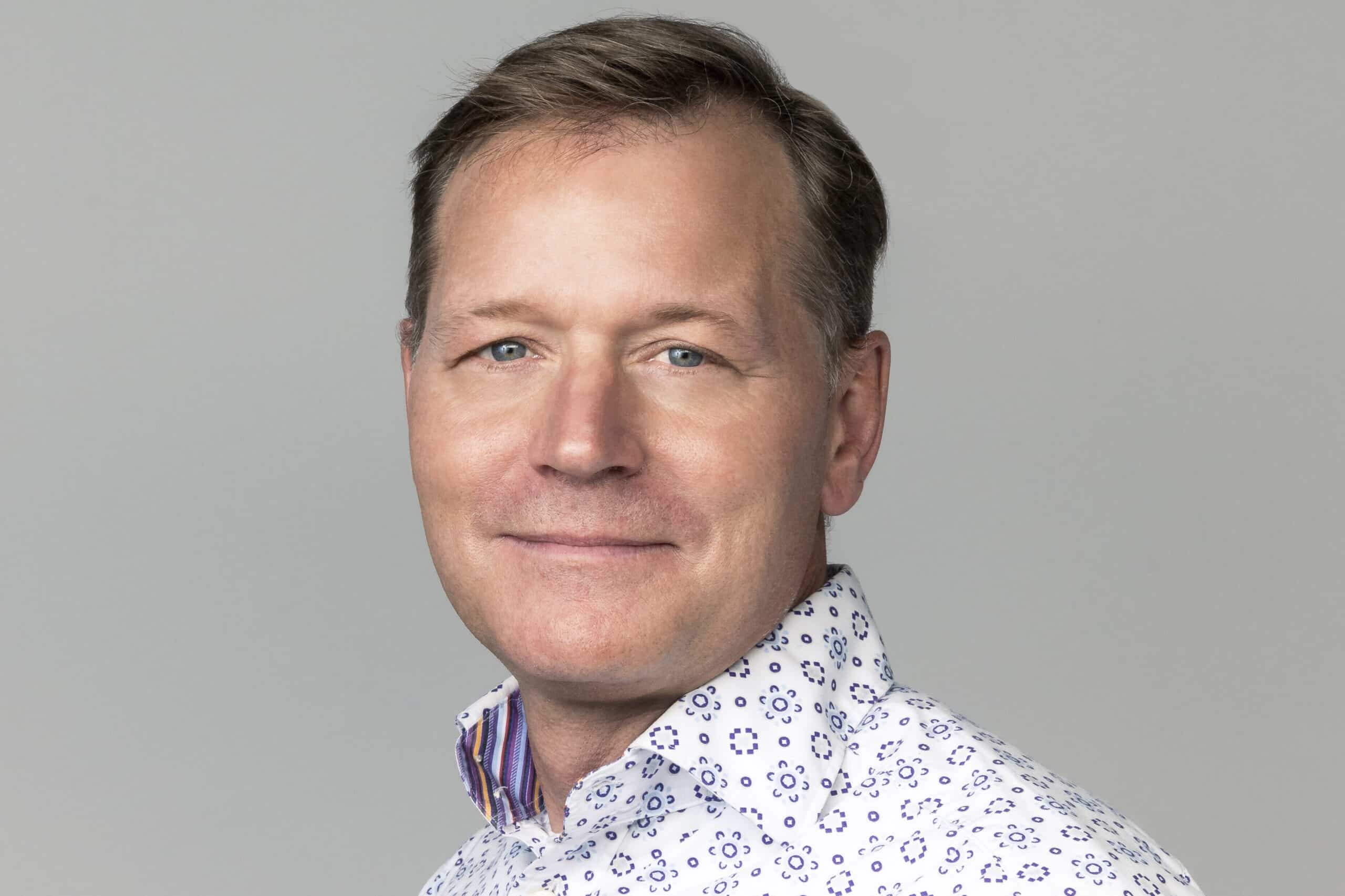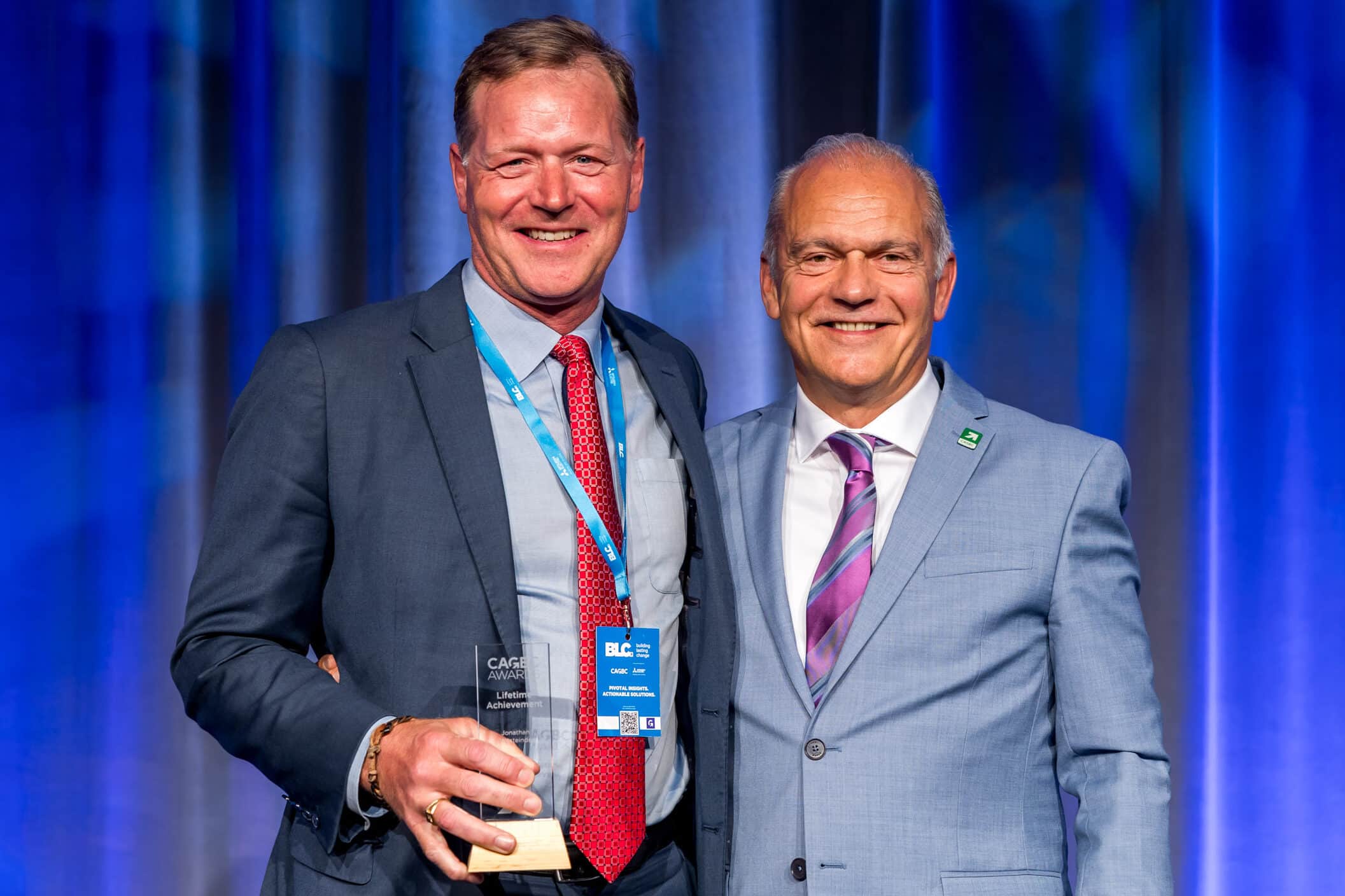Changing attitudes for sustainable business models, with Jonathan Westeinde
CAGBC staff on August 11, 2025
- Theme
- Member Profiles
A popular face of Canadian sustainable real estate development, Jonathan Westeinde has led more than $5 billion in high-performance, socially responsible building projects across Canada. Known for his interest in financing vehicles for building developments, Westeinde strives to create ‘planet fit’ real estate assets that tap into non-conventional lifecycle financing. His leadership has driven the creation of innovative financing models to support green development, including zero carbon district energy systems, geothermal energy services contracts, and green loans. In this interview, he discusses his approach to developing a business model that integrates climate, resilience, and equity in the service of communities.
Can you tell us about your current role and how you got here?

I’m the founder and CEO of Windmill Development Group, a company dedicated to transforming real estate development by aligning environmental, social, and economic value. My path to this role was somewhat unconventional. While I grew up around a large family-run construction business, I initially diverged into technology and venture capital, spending a decade exploring how innovation could scale impact. I returned to the development world with a strong belief that sustainability would become the key driver of innovation in the built environment.
A major influence during that transition was the book Natural Capitalism by Amory Lovins and Paul Hawken, which crystallized the idea that aligning business strategy with ecological principles isn’t just ethical—it’s smart economics. Founding Windmill gave me the opportunity to put those ideas into practice and demonstrate that you don’t have to trade off sustainability for profitability—they can and should go hand in hand.
Your company’s ideals are ‘people, planet and profit’. How did you build your business around sustainability?
As a founding board member of the Canada Green Building Council, we built our business around sustainability from the very beginning. We set LEED Platinum as our minimum target for every project—an ambitious goal at the time—which gave us a clear, actionable framework for embedding sustainability into building design and construction. That commitment led to Dockside Green in Victoria, the first LEED Platinum-certified community in North America, and helped establish our credibility early on.
As the industry evolved, so did our approach. We broadened our lens by adopting the One Planet Living framework, which continues to incorporate LEED at the building level but expands our focus to include community-wide sustainability, equity, and resilience. This more holistic framework guides every aspect of our work—from design and construction to community partnerships and operations.
Zibi, Canada’s first One Planet Living-endorsed community and one of the country’s largest zero-carbon developments, reflects that evolution. Our steadfast focus on sustainability has consistently attracted partners and investors who understand that doing the right thing environmentally and socially also drives long-term economic value. Over time, we’ve embedded these values into every layer of our organization—from our project delivery model to our culture and collaborations.
In a past interview, you said attitudes toward sustainable building projects have changed dramatically since you entered the business. What’s changed and what does this mean for start ups or developers looking for investment tied to sustainability?
The shift has been remarkable. Twenty years ago, sustainable development was often seen as a cost centre—something you did for optics or compliance. Today, it’s a core value driver. Investors, tenants, and municipalities now demand sustainability, and financial markets are rewarding those who deliver it. For startups or emerging developers, that means there’s a real opportunity—but also an expectation. The bar is higher, but the capital is more available if your business model truly integrates climate, resilience, and equity into its DNA.
You’ve undertaken many LEED projects, and large net-zero carbon community projects such as Zibi – how has third party certification helped your business model?
Third-party certification has been essential in validating our sustainability commitments and aligning all stakeholders around a common standard. LEED—and more recently, One Planet Living—has provided a clear, trusted roadmap that designers, builders, funders, and regulators can all rally behind. These certifications help de-risk projects by creating transparency and accountability, which in turn builds trust and accelerates approvals.
When you’re pioneering new approaches, credible third-party validation is critical to gaining investor confidence. In the case of Zibi, being able to say, “This isn’t just our vision—it’s been independently verified,” was instrumental in moving the project forward. Certification also played a central role in validating our One Planet Living Fund platform, giving investors and partners assurance that the outcomes we’re targeting are measurable, credible, and aligned with internationally recognized sustainability benchmarks.
Did CAGBC’s efforts factor into the changes you’ve seen in the building sector and adoption of green building practices? What about the trajectory of your career and business?
Absolutely. CAGBC played a critical role in professionalizing and mainstreaming green building in Canada. By setting rigorous standards and providing the education and advocacy backbone, CAGBC helped move the industry from niche to norm. For Windmill, being able to lean on their tools and community from the early days helped us attract like-minded talent and collaborators. On a personal level, the CAGBC ecosystem has been a great place to learn, share, and stay inspired.
You were recently recognized with CAGBC’s Lifetime achievement honour. In your comments, you said it might be a little prematurely given – so, what’s next for you? What are new challenges and opportunities you see ahead?
I was deeply honoured—and admittedly a bit surprised—by the Lifetime Achievement Award. It feels premature in some ways, as I still believe we’re just getting started. Looking ahead, my focus is on scaling our impact by developing replicable, financeable models for zero-carbon, mid-rise housing that also embed community equity and climate resilience.
A major part of that work involves advancing modular and prefabricated construction—not just to improve efficiency and reduce operational emissions, but to address the much larger, long-term challenge of embodied carbon. While the market has largely focused on operational performance, the full climate impact of buildings extends across their entire lifecycle. This picks up where early pioneers like Bill McDonough left off, with a renewed commitment to his “cradle to cradle” philosophy in the built environment.

We’re also working to scale and replicate our One Planet Living Fund platform—a model that ties capital directly to high-impact, zero-carbon community outcomes. By aligning financial instruments with measurable sustainability metrics, we aim to accelerate investment into projects that deliver both environmental and social value.
I’m equally passionate about mentoring the next generation of leaders—particularly Jeremy Reeds and the broader team stepping into leadership roles at Windmill—who will carry this work forward and push it even further. The next frontier is deeply systemic: aligning building decarbonization with grid transformation, housing affordability, and material circularity. That’s where I see the most urgent opportunity for impact—integrating zero-carbon building solutions with broader energy and equity transitions, and making circular design not just a principle, but a practice.